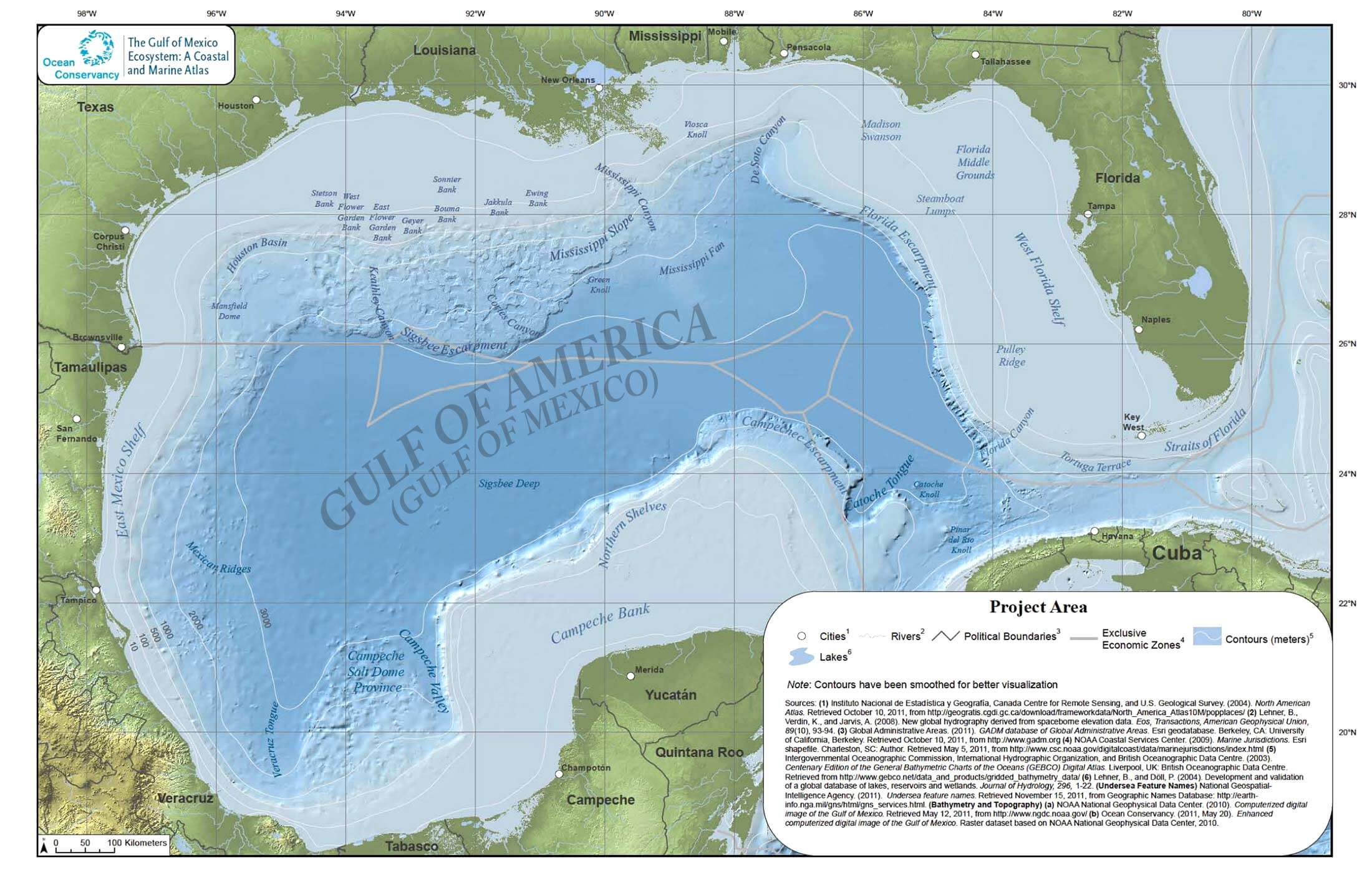
The possibly least dangerous/damaging executive order of this Administration has been initially implemented as of February 9, 2025.
Secretary's Order 3423 (NOTE: that link does not work yet because this Administration lacks attention to detail) directs the Board on Geographic Names to immediately rename the Gulf of Mexico to the Gulf of America and to update the Geographic Names Information System to appropriately reflect the change. This Order implements President Trump's direction in Executive Order 14172, "Restoring Names That Honor American Greatness," that the name be changed.
Here is the official description:
The Gulf of America, formerly known as the Gulf of Mexico, with an average depth 5300 ft is a major body of water bordered and nearly landlocked by North America with the Gulf's eastern, northern, and northwestern shores in the U.S. and its southwestern and southern shores in Mexico. Bordered by Cuba on the SE, it connects to the Atlantic Ocean via the Florida Straits between the U.S. and Cuba, and the Caribbean Sea via the Yucatan Channel between Mexico and Cuba. In common usage, the term "Gulf Coast" refers to the continuous portion of the coast running from Cape Sable, FL to the northern tip of the Yucatan Peninsula; in geographic usage it extends East from and to include the Florida Keys to the northerly sides of the Keys there. The Gulf of America spans over 1,700 miles of U.S. coastline.
There are many documented name variants for the Gulf of Mexico^HAmerica, some dating back to 1821:
- Bay Of Mexico
- Bay Of Newe Spaine
- De Golf Van Mexiko
- Golf Of Mexico
- Golf Von Mejico
- Golf Von Mexiko
- Golfe De Mexique
- Golfe Du Mexeque
- Golfe Du Mexique
- Golfo De Mexico
- Golfo De Mexicque
- Golfo De Nueva España
- Golfo Del Messico
- Golfo Mezicano
- Golphe De Mexique
- Golphe Du Mexique
- Golphe Mexique
- Gulf Of Mexico
- Gulph Of Mexico
- Le Golfe De La Nouvelle Espaigne
- Le Golfe Du Mexique
- Mar Del Norte
- Mar Del Seno Mexicano
- Mar Di Florida
- Meer Busen Mexico
- Mexican Gulf
- Mexicanska Wiken
- Mexicanus Sinus
- Seno Mejicano
- Seno Mexicano
- Sinus Mexicanus
The U.S. Board on Geographic Names
The U.S. Board on Geographic Names (BGN) maintains uniform geographic name usage throughout the Federal Government. Comprising representatives from various Federal agencies involved in geographic information, population, ecology, and public lands management, the BGN shares its responsibilities with the Secretary of the Interior.
The BGN's original program of names standardization addressed the complex issues of domestic geographic feature names during the post-Civil War era of exploration, mining, and settlement in the western territories. Inconsistencies, contradictions, and varying spellings among numerous names posed significant challenges for surveyors, map makers, and scientists who needed uniform and non-conflicting geographic nomenclature. President Benjamin Harrison signed an Executive Order establishing the BGN and granting it the authority to resolve unsettled geographic names questions. Decisions made by the BGN were universally accepted and binding by all departments and agencies of the Federal Government.
The BGN gradually expanded its interests to include foreign names and other areas of interest to the United States, a process that accelerated during World War II. In 1947, Congress recreated the BGN through Public Law 80-242. The BGN's Bylaws, established in 1948 and revised as needed, have proven the usefulness of standardizing (not regulating) geographic names.
Today, over 50 nations have established national names authorities. The United Nations recognized that "the best method to achieve international standardization is through strong programs of national standardization." Numerous nations have implemented policies relevant to toponymy (the study of names) within their countries.